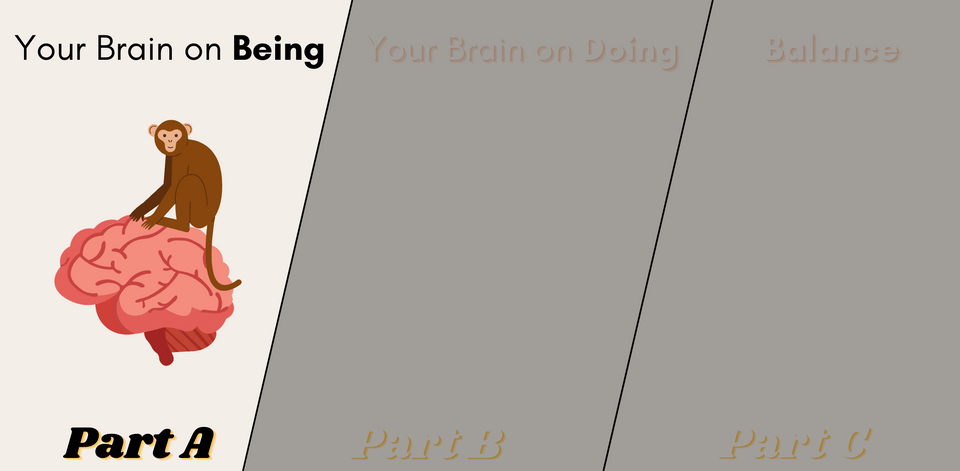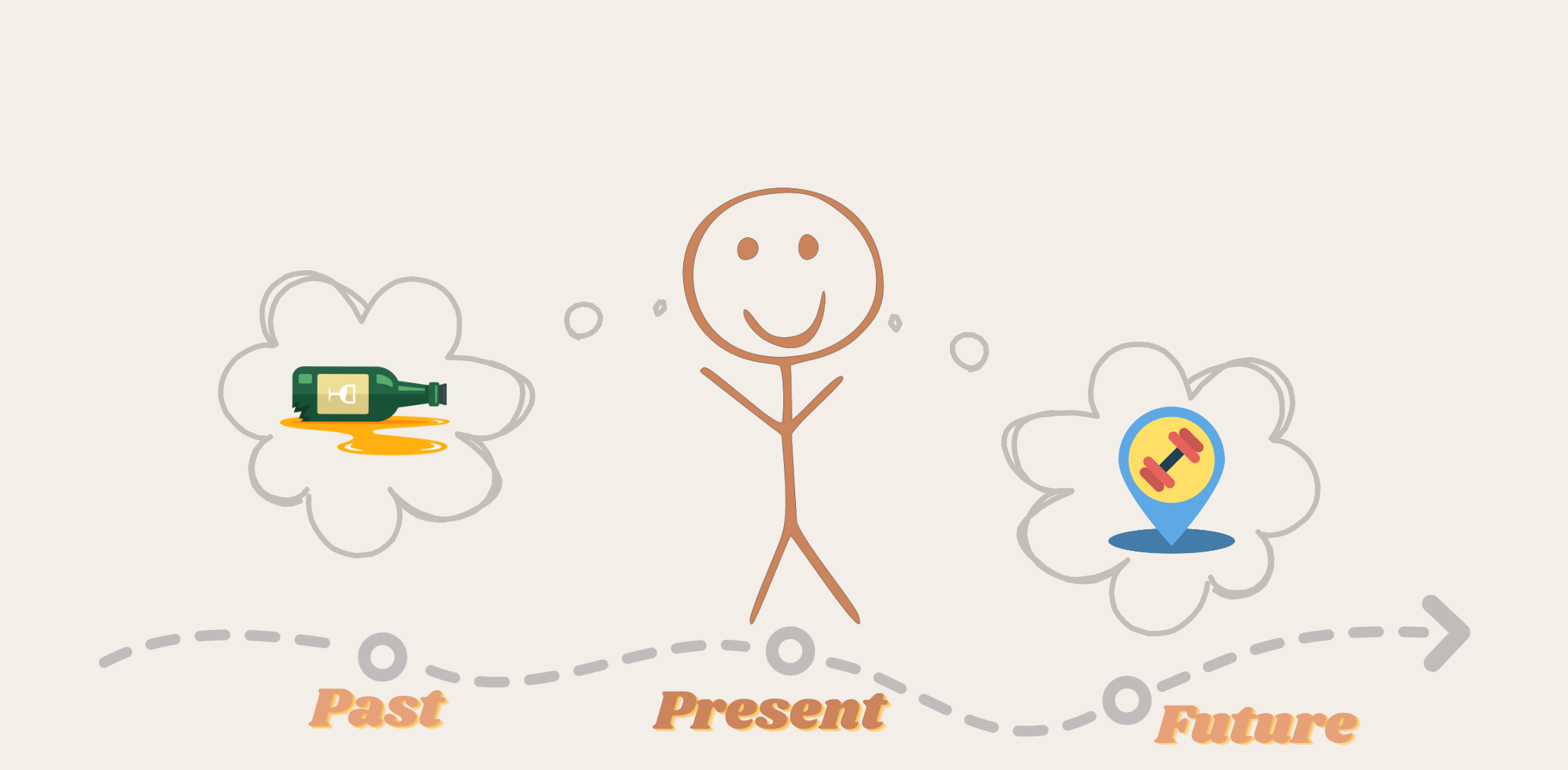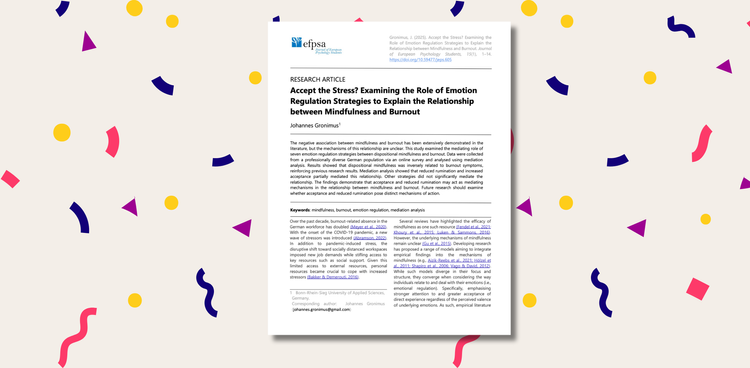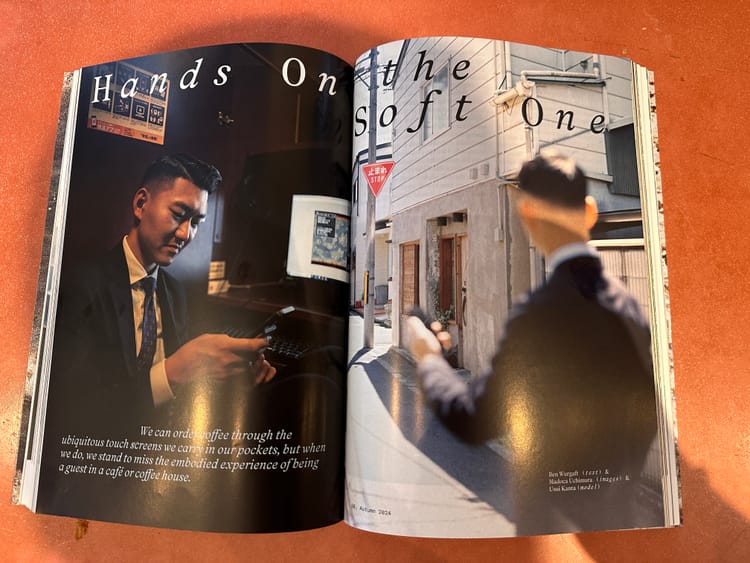Your Brain on Being

When was the last time you didn’t do anything for more than 10 minutes? No Netflix, no Instagram, no work, no reading, no workout - Nothing. Just being.
If the answer is “I don’t really know”, you’re not alone. People will go to a lot of trouble to avoid just Being.
Imagine a bus stop. Is there anyone just standing, existing peacefully? Probably not. Most likely, everyone’s on their phone. Now, you might argue that modern phones are just amazing at triggering dopamine - so this could very well just be for the fun of phones, not the avoidance of Being.
But suppose the phones triggered electric shocks instead of dopamine. If half of the people at the bus stop voluntarily shocked themselves instead of just Being, what would that imply?
Well, in a 2014 study, subjects were left alone with a device that delivered electrical shocks. Not lethal, but painful. All they had to do was sit there for 6 minutes. Or they could give themselves a shock. Free choice.
Now, what do you think: How many chose to sit in peace, and how many played Zeus⚡️?
Almost half of the participants shocked themselves at least once. One guy went absolutely crazy and gave himself 190 (!!). Apparently, sitting with ourselves is so uncomfortable that electric shocks are an upgrade. Apparently, we have a real problem with Being.
Luckily, most people don’t walk around shocking themselves all day. But that doesn’t mean the problem has vanished.
Instead, we just spend our days Doing. The new hobby, the side project, the next book, the revolutionary workout. The internet offers boundless opportunities. Social media offers a constant stream of people Doing the cool stuff. And they probably seem a) younger & b) better than you. So if it’s not for distraction, it’s for keeping up. You never run out of things to Do.
Which is all well and good, until it isn’t. Halfway through my last semester at Uni, I had to find out the hard way. I spent the last 4 years running at full speed. Two Degrees, aiming for perfect grades. Add to that all the side projects, books and workouts. The result: during my semester, I routinely left home at 5am and returned at 9pm. In my last semester break, I wrote an 8000-word research paper for publication, simply because (and this is a real quote) “I needed something to do.”
Basically, I made a point out of spending every waking minute Doing. Feeling proud of the speed at which I was running. The only problem was that I was running head-first into a full-on Burnout. And all of a sudden, I was forced to stop all the Doing. With the distraction gone and my therapist asking all these pesky questions, I finally had to question my life design.
You see, when you’re running, everything along the way becomes blurry. Focused on the finish line, you wonder if maybe you can go a little bit faster - but rarely why you’re even running. The slight problem: In life, the finish line is death. Maybe not the best thing to be rushing towards.
So let’s say you slow down a bit. Maybe you’ll manage to see some trees and flowers along the way. Wonderful.
But now suppose you’re really crazy - you stop for a second. Turn around. What happens when you take a look at what you were even running from?
What’s all this frantic running really about?
Funny enough, my therapist told me afterwards that this is exactly the question she usually examines with people in their Mid-Life-Crisis. Which I found fascinating - How come so many people face this exact situation? So after I was done resolving my own issues, it was time to dive back into the research rabbit hole. I was wondering:
- Why do we work so hard to avoid Being at all cost?
- Why do we get lost in Doing so easily?
- What happens when we finally take a look?
The answers I found were rooted in neurobiology, social conditioning, and to a degree, in yourself. Which is a little more complex than my usual subject matter. My attempts at making this one post just felt crammed. So I’m trying something new - A little series. Over the next three weeks, each of these questions will get the depth it deserves.
- Today will dive into the Being mode of the mind, and why it sparks so much avoidance.
- Next week, we’ll examine the quick fix - Doing - and why it's such a tempting distraction.
- To wrap it up, I’ll share the tools I learned so you can figure this one out for yourself before you hit 40 😏
So, enough talk. What’s up with this ominous Being mode?
Your Brain on Being
The brain has a network for everything. Allow me to go full neuroscientist for a second, this will make sense shortly. So:
- If there’s a maths problem to solve, the right intraparietal sulcus will activate.
- If there’s a memory to recall, the hippocampus lights up.
- Another network is running wild and needs to be regulated? The prefrontal cortex is already on it.
But what happens when there’s no task to focus on? Turns out there’s a network for that as well.
In a 2001 study, Neuroscientists were trying to locate the networks responsible for solving visual tasks. But along the way, they discovered a weird pattern: Anytime the subjects were waiting between tasks, the same parts of their brains would spike in activity.
Completely by accident, they had discovered the Default Mode Network. Centred around the posterior cingulate cortex, these are the brain circuits that activate when there’s no goal to focus on. When the mind wanders aimlessly.
But this leaves one question. Imagine a car using the same amount of gas parked at a red light as it does going 100km/h on the highway. Wouldn’t that be horribly inefficient? Well, thanks to the monkeys running wild whenever there’s no task, the brain uses the same amount of energy when it’s resting as it does solving complex maths. So there’s gotta be a really good reason for all this monkey business. Right?
Right. Essentially, the Default Mode Network is responsible for our sense of self. How? Well, consider what happens when the mind wanders. It either:
- Dwells on what happened to you in the past (”Remember when you dropped that Wine Bottle in the store last Thursday?”) or
- Makes up scenarios of your potential future (”Next week, I’ll sign up at the Gym. Then I’ll go there every day. Then I’ll be ripped and people will like me more.”)

By linking different points in time, mind-wandering can create a coherent story focused around a sense of “me”. Which sounds great. But it comes at a cost - because the brain adds its twist to the story. Check out this 2010 Harvard study titled “A Wandering Mind is an Unhappy Mind”. Researchers randomly pinged participants on their phones throughout their normal day-to-day, asking three simple questions:
- How are you feeling?
- What are you doing?
- Are you thinking about something other than what you’re currently doing?
Whenever participants were thinking about something else than what they were doing (→ Mind-Wandering), they were considerably less happy. And it makes sense - as Professor David Richardson put it:
“This self-system mulls over our life - especially the problems we face, the difficulties in our relationships, our worries and anxieties. Because the self ruminates on what’s bothering us, we feel relieved when we can turn it off”
The monkey mind isn’t a greatest hits repeating your accomplishments. It replays your failures and worries about all your possible future fuck-ups. By default (pun intended), Being is a highly uncomfortable state.
It’s hardly surprising we look for ways to escape it. Which is what we’ll look at over the coming weeks. The easy way and the hard way. The quick fix and the uncomfortable solution.
Next week, we’ll dive into the quick fix (→ Avoidance by Doing) and why it can be so incredibly addictive - both on the neural and the social level. But as with most forms of avoidance, this fix comes with a catch.
In my case, that catch was Burnout. For others, it’s the midlife crisis. So it might be worth it to explore the uncomfortable solution. Which is what I did in therapy - and what Part 3 is all about.
But that’s for next week. Until then, I’d like to propose a little experiment. Over the next week, check in with your monkey mind every once in a while. Just to observe the patterns. The creativity with which it can make anything about you. The certainty with which it can worry about potential scenarios. It gets quite fascinating, I promise.
If you don’t wanna miss the next part, Subscribe to get it delivered straight to your Inbox 😏




Comments ()